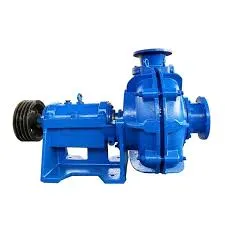Somali
- Afrikaans
- Albanian
- Amharic
- Arabic
- Armenian
- Azerbaijani
- Basque
- Belarusian
- Bengali
- Bosnian
- Bulgarian
- Catalan
- Cebuano
- Corsican
- Croatian
- Czech
- Danish
- Dutch
- English
- Esperanto
- Estonian
- Finnish
- French
- Frisian
- Galician
- Georgian
- German
- Greek
- Gujarati
- Haitian Creole
- hausa
- hawaiian
- Hebrew
- Hindi
- Miao
- Hungarian
- Icelandic
- igbo
- Indonesian
- irish
- Italian
- Japanese
- Javanese
- Kannada
- kazakh
- Khmer
- Rwandese
- Korean
- Kurdish
- Kyrgyz
- Lao
- Latin
- Latvian
- Lithuanian
- Luxembourgish
- Macedonian
- Malgashi
- Malay
- Malayalam
- Maltese
- Maori
- Marathi
- Mongolian
- Myanmar
- Nepali
- Norwegian
- Norwegian
- Occitan
- Pashto
- Persian
- Polish
- Portuguese
- Punjabi
- Romanian
- Russian
- Samoan
- Scottish Gaelic
- Serbian
- Sesotho
- Shona
- Sindhi
- Sinhala
- Slovak
- Slovenian
- Somali
- Spanish
- Sundanese
- Swahili
- Swedish
- Tagalog
- Tajik
- Tamil
- Tatar
- Telugu
- Thai
- Turkish
- Turkmen
- Ukrainian
- Urdu
- Uighur
- Uzbek
- Vietnamese
- Welsh
- Bantu
- Yiddish
- Yoruba
- Zulu
Telephone: +86 13120555503
Email: frank@cypump.com
Dec . 16, 2024 19:12 Back to list
Understanding the Design and Functionality of Mixed Flow Pump Impellers in Fluid Systems
Understanding the Mixed Flow Pump Impeller
Pumps are vital components in various industrial applications, designed to move fluids efficiently and effectively. Among the various types of pumps, mixed flow pumps play a crucial role. Central to the operation of mixed flow pumps is the impeller, an essential element that significantly impacts performance, efficiency, and application suitability. This article explores the intricacies of mixed flow pump impellers, their design, functionality, and advantages.
What is a Mixed Flow Pump?
A mixed flow pump combines features from both centrifugal and axial flow pumps. In this system, fluid flows through the impeller not just radially (as in centrifugal pumps) but also axially. This dual flow path allows mixed flow pumps to handle higher volumes at moderate pressure, making them suitable for diverse applications including water treatment, irrigation, and industrial processes.
The Role of the Impeller
The impeller is the heart of any pump. It transforms mechanical energy from the motor into kinetic energy in the fluid, propelling it through the system. In mixed flow pumps, the impeller's design is critical because it dictates the flow characteristics. The impeller consists of blades attached to a rotating hub, which can have varied shapes, sizes, and orientations depending on the pump's intended use.
Design Characteristics
1. Blade Design The blades of a mixed flow pump impeller are usually designed with a specific angle and curvature. These characteristics influence how the fluid enters the pump and how efficiently it is lifted and discharged. Generally, blades are designed to optimally balance the axial and radial flow components.
2. Diameter and Speed The diameter of the impeller affects the pump’s flow rate and head. A larger diameter can move more fluid but usually requires more power. The rotational speed is also crucial; higher speeds can improve flow but may increase wear and energy consumption.
3. Number of Blades The number of blades on an impeller can vary. More blades often provide better flow characteristics but can also lead to increased turbulence and inefficiencies. Finding the right balance is essential for optimizing performance.
4. Materials Impellers are made from various materials, including cast iron, stainless steel, or specialized composites. The choice of material depends on factors like fluid properties, temperature, and corrosiveness.
mixed flow pump impeller

Advantages of Mixed Flow Pump Impellers
Mixed flow pump impellers provide several advantages
1. Higher Efficiency The unique flow dynamics of mixed flow pumps allow for efficient transport of fluids, particularly in applications where high flow rates and moderate pressure are required.
2. Versatility Mixed flow pumps can handle a wide range of fluids, including clean water, wastewater, and slurries, making them suitable for various industries.
3. Ease of Maintenance Many mixed flow pumps are designed to allow easy access to the impeller for maintenance and repair, ensuring that downtime is minimized.
4. Compact Design Compared to other pump types, mixed flow pumps are often more compact, which allows for easier installation in constrained environments.
Applications
Mixed flow pumps are extensively used in several sectors due to their advantageous properties. In municipal water systems, they are vital for transferring clean water and handling sewage and stormwater. In agriculture, they assist in irrigation systems, enabling efficient water distribution to crops. In industrial settings, mixed flow pumps facilitate processes like cooling, chemical transfer, and slurry movement.
Conclusion
The mixed flow pump impeller is a sophisticated component fundamental to the operation of mixed flow pumps. Its design intricacies and functionality allow for efficient handling of various fluids across multiple industries. As technology continues to advance, improvements in impeller design and materials will further enhance pump performance and reliability. Understanding these elements is crucial for engineers and operators to ensure optimal pump selection and operation, ultimately leading to more efficient systems and processes.
-
Custom Drilling Mud and Slurry Pump Supplier - High Efficiency, Tailored Solutions
NewsJun.10,2025
-
Supply Vertical Submersible Sewage Pump High-Efficiency WQ/QW Pumps Supplier
NewsJun.10,2025
-
Premium Sewage Ejection System & Pumps Efficient Waste Removal
NewsJun.09,2025
-
Premium Wholesale Slurry Pump Impellers Durable & Efficient Slurry Handling
NewsJun.09,2025
-
Top Sewage Pump Companies Durable Industrial Solutions for Efficiency
NewsJun.09,2025
-
Heavy Duty Slurry Pumps - OEM High Performance & Bulk Wholesale
NewsJun.09,2025










